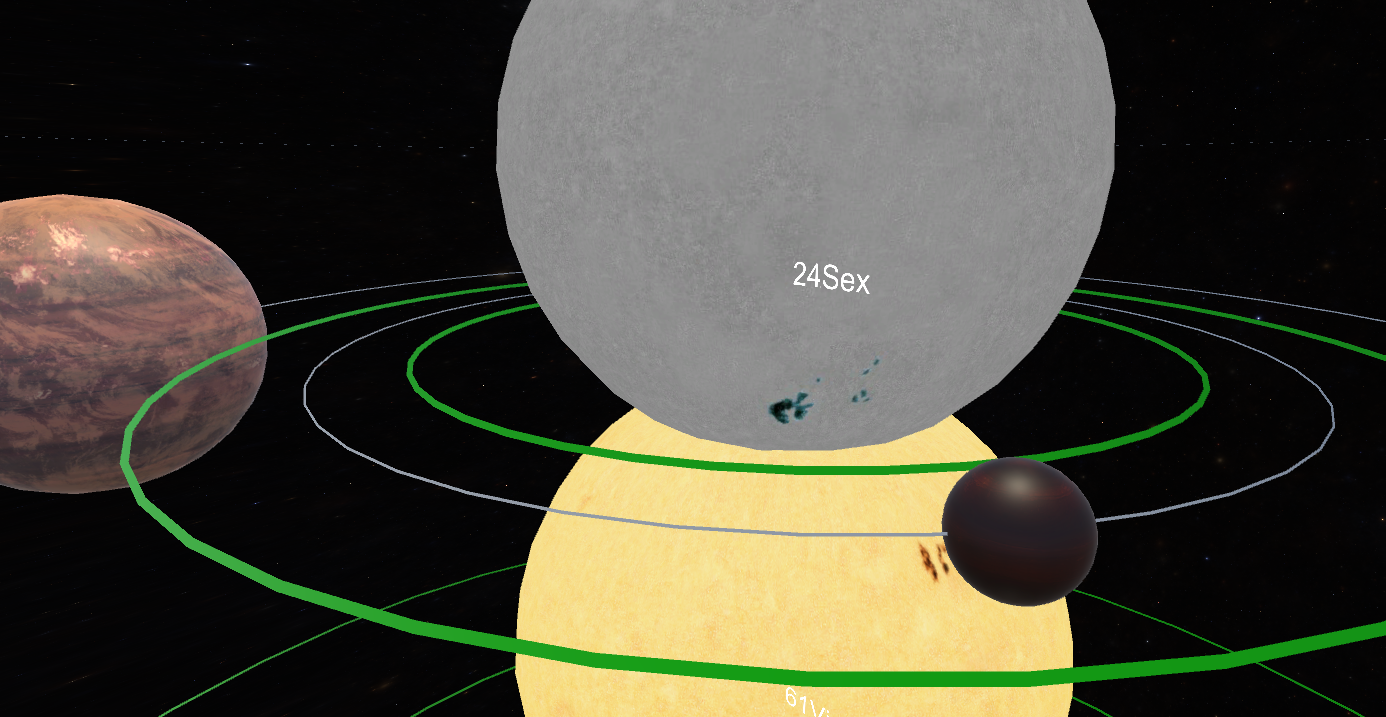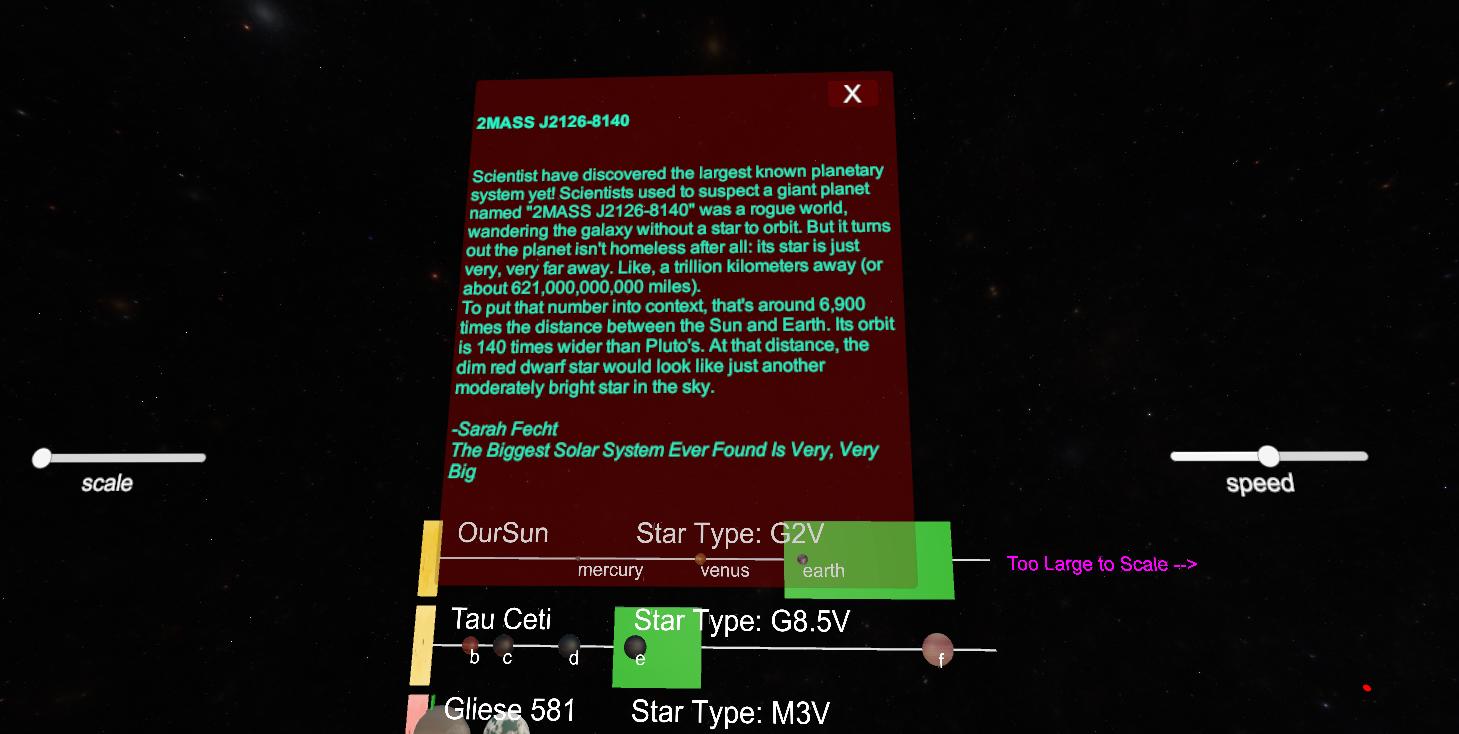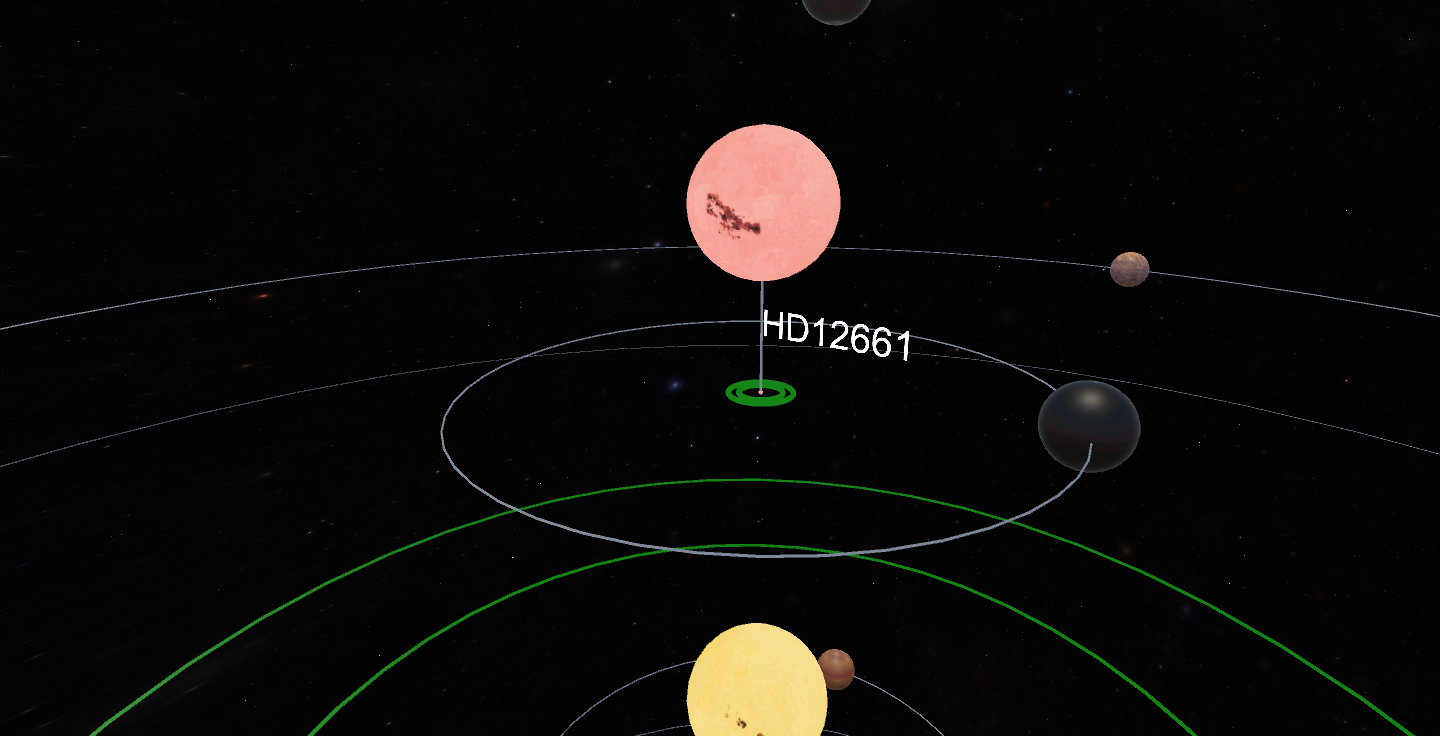
Fig 1: Earth in orbit

Fig 2: Mars in orbit

Fig 3: Another habitable planet
Discussion
hen we first ran the application, I was completely taken aback by the sheer amount of space that planetary systems make up. Though we only have 40 systems within the application, you get an immediate sense of wonder at the idea of how many systems exist and how large the universe truly is. I learned a lot about habitable zones, orbits, interesting systems, and the size of planets themselves.
Immediately, the first planet I wanted to look at was Earth. To my surprise, Earth isn’t smack in the middle of the habitable zone of our Sun. In fact it is right on the edge, teetering close to being out of the “Goldilocks Zone” and much too close to the sun for comfort. (See figure 1) That itself made me realize there is a pretty sizable range within our system for the habitable zone. It almost looked like Mars was equidistant from the outer habitable ring as Earth was close to the inner habitable ring. (See figure 2) A couple hundred thousand miles more and Mars itself would be habitable. I did somewhat have a grasp on that, as there has been interest in colonizing Mars these past couple of years, and I assume it is because Mars isn’t beyond incredibly cold. Upon seeing this, I looked up the distance that Mars was from Earth, and it was 54.6 million kilometers! Oh man did that change my perspective. What felt like such a small distance in VR was way larger than I could have imagined. With this new view, when I put the goggles back on I again had a sense of wonder for how large the universe truly is. Well what about the temperature on Mars? I thought it must be much colder than I anticipated but looking that up again, the high on Mars is actually 20 degrees Celsius which means the sun must radiate an astronomical amount of heat!
Taking a step back (literally), I decided to look at habitable zones on other planetary systems. I did end up finding one planet in the 24 sex planetary system. (See figure 3) I also began to notice that some systems had very small habitable zones, which I assumed was due to the low heat that the sun for that system itself produced. (See figure 6)
As for orbits, there are some that are huge (like our own Neptune) and some that are very very small, such as the planet in the HD219828 system (See figure 5). I had always assumed that larger planets had larger orbits in general but we can see that is not the case.
Using the buttons built into our UI I was also able to explore 4 predefined sets; the solar system with the largest planets, with the most planets (outside of ours), with the Brightest stars, and solar systems with the longest orbital periods — meaning the longest years. (See figure 4).
This application allowed me to explore space in ways I had never imagined before. It was a great learning experience, from the small details to the larger details, like the scale of space and planets in comparison to ourselves!


